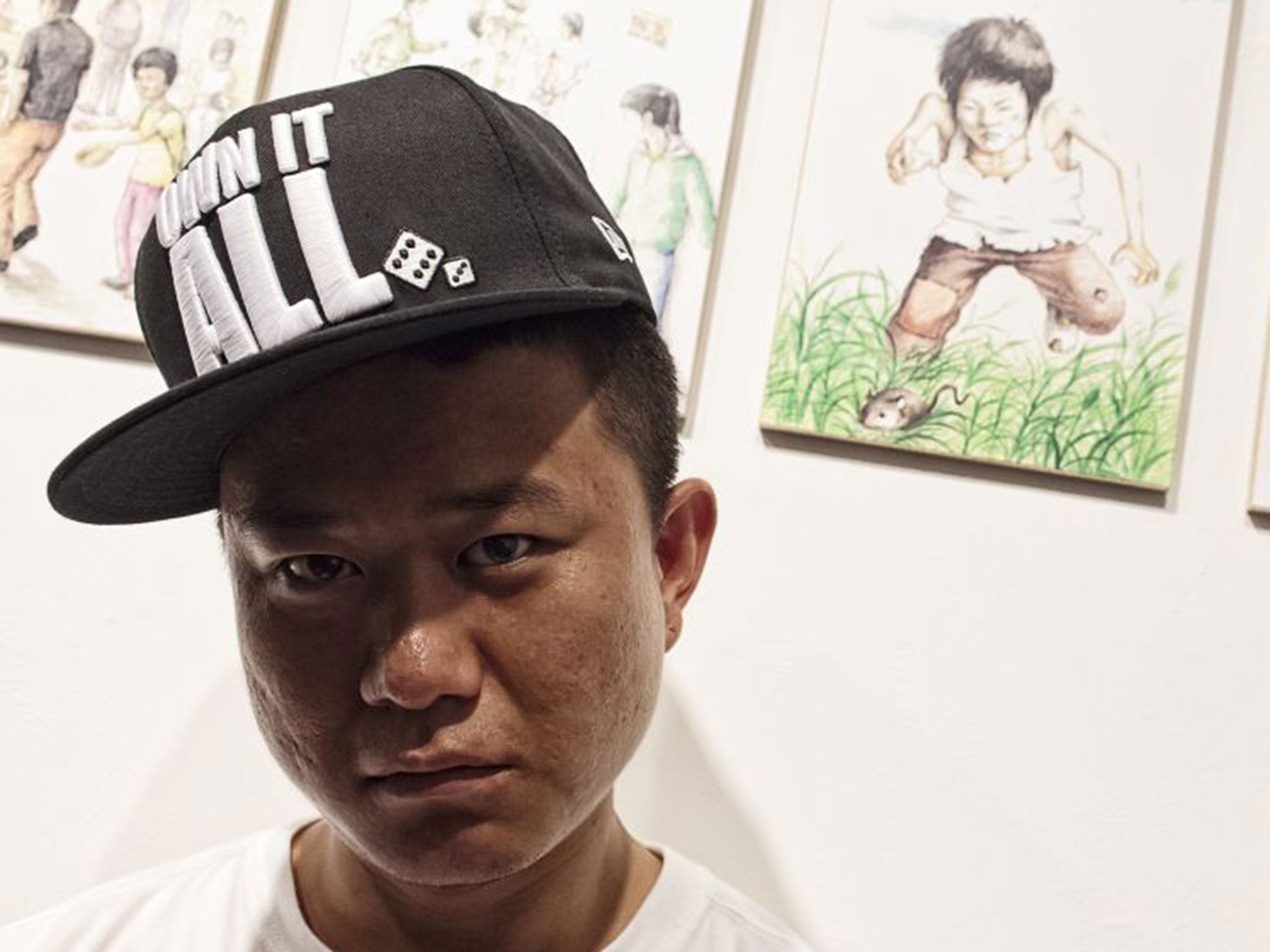The North Korean rapper not afraid to take on Kim Jong-un
Kang Chun-hyok is from generation of defectors coming of age and finding voice in South Korea

Your support helps us to tell the story
From reproductive rights to climate change to Big Tech, The Independent is on the ground when the story is developing. Whether it's investigating the financials of Elon Musk's pro-Trump PAC or producing our latest documentary, 'The A Word', which shines a light on the American women fighting for reproductive rights, we know how important it is to parse out the facts from the messaging.
At such a critical moment in US history, we need reporters on the ground. Your donation allows us to keep sending journalists to speak to both sides of the story.
The Independent is trusted by Americans across the entire political spectrum. And unlike many other quality news outlets, we choose not to lock Americans out of our reporting and analysis with paywalls. We believe quality journalism should be available to everyone, paid for by those who can afford it.
Your support makes all the difference.Most rap songs do not deal with matters of geopolitical significance – such as nuclear weapons and labour camps – but Kang Chun-hyok is not most rappers. The 29-year-old is an escapee from North Korea, where the most boundary-pushing music is revolutionary opera extolling the virtues of Kim Il-sung, the country’s founder.
Now, Kang wants to be the greatest rapper North Korea has ever produced. With few rivals to the title, he may well be able to claim it.
“You took money that we made digging earth to fund nuclear weapons. Take out that fat from your pot belly. Nuclear weapons. Nuclear weapons,” he rapped at the opening of an exhibition called “Kkotjebi in Bloom” in Seoul, this month.
Kang also had art on display at the exhibition, organised by the Citizens’ Alliance for North Korean Human Rights – a non-governmental organisation – to draw attention to the hardships that children in North Korea face.
“I am not afraid. Go ahead, attack me,” Kang sang, moving his right hand Eminem-style. His trendily askew baseball cap read “Own It All,” while his Nike T-shirt exhorted: “Man Up or Shut Up.”
“Give me back that dirtied money. Show me the money,” he concluded, to cheers from the humanitarian workers, foreign diplomats and academics in the gallery – and from people who were walking along Insadong-gil, a street in the city centre lined with art galleries and tourist shops.Kang is one of a generation of North Korean defectors coming of age and finding his voice in South Korea. And his triumph is even more noteworthy given that he was a kkot-jebi, or “flowering swallow,” the term used in North Korea for homeless children, a reference to their constant hunt for food and shelter.
About 25,000 North Koreans have escaped to the South over the past two decades. The first wave tended to be high-ranking officials who were treated like royalty, and mined for information about Kim Jong-il’s regime.
But then thousands who were not considered so valuable in the South’s eyes started arriving, including many in their twenties and thirties from the impoverished northern provinces. They had no useful information about Kim and his cronies, spoke with country accents, and didn’t know how to use credit cards or smartphones – essentials of life in the South. But their children have grown up in South Korea and have been able to integrate more easily.
“These are people who came here 10 years ago and are the first wave of high school and university graduates,” said Joanna Hosaniak, deputy director general of the Citizens’ Alliance for North Korean Human Rights. “Now they’re writing books, painting, showing leadership in their own areas. They’re like eggs that are hatching.”
That applies even to the most disadvantaged of North Korean children – the kkot-jebi. In the North, these children survive by begging and scrounging for food, and can often be seen sleeping around train stations.
The problem of homeless children was particularly severe prior to 2010, after a devastating famine caused thousands, perhaps millions, of North Koreans to die of starvation or flee to China. Many left behind children who had no choice but to fend for themselves.
While malnutrition is still common in North Korea, starvation is not. That means there are fewer traditional kkot-jebi, but new categories of “swallows” are emerging. Today, North Koreans talk about the other “swallows” who have flown away: the gun-jebi, who have left the military; the chong-jebi (young adults) and noh-jebi (elderly people) who are living on the streets. There are even whole families – kachok-jebi – leaving their homes to look for food.
©Washington Post
Join our commenting forum
Join thought-provoking conversations, follow other Independent readers and see their replies
Comments